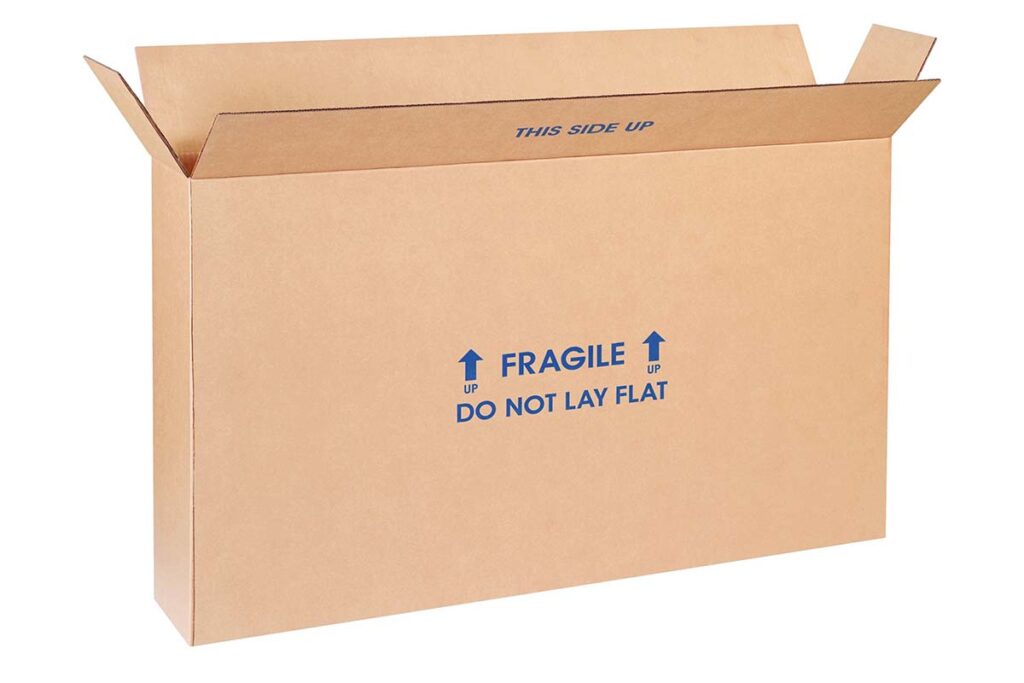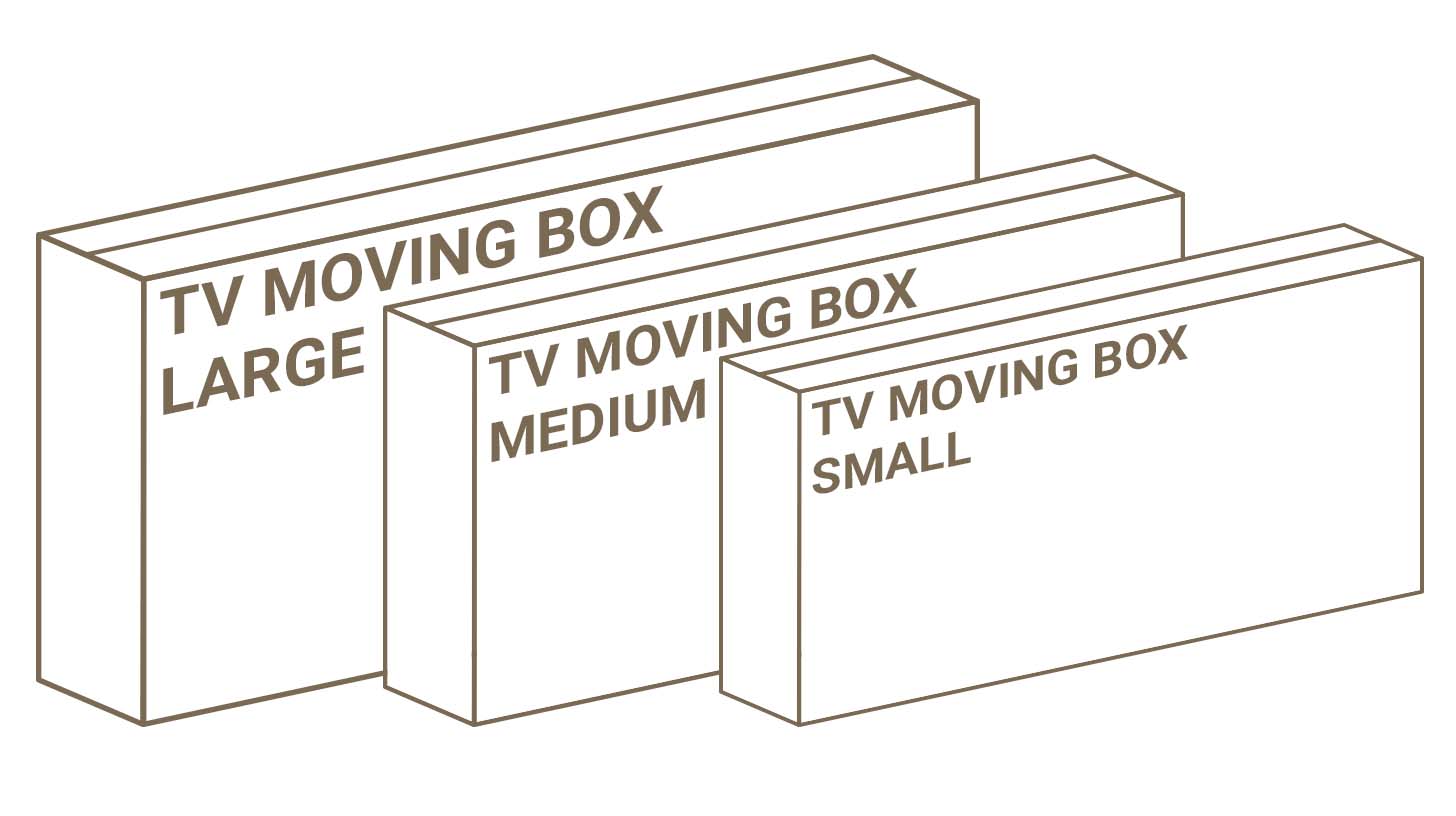Introduction
Moving can be stressful, especially when it involves transporting delicate items like televisions. One of the most crucial aspects of ensuring the safety of your TV during transit is using suitable packing materials. Among these, TV moving boxes stand out, specifically designed to offer maximum protection. These boxes, tailored to accommodate televisions’ unique dimensions and weight, are a must-have for anyone planning a move. In this article, we will delve into the different types of TV moving boxes, understand their sizes, and provide a comprehensive guide on using them effectively to ensure your TV’s safe relocation.
Navigation
- Types of TV Moving Boxes
- Understanding TV Moving Box Sizes
- How to Choose the Right TV Moving Box
- How-to-Use Guide
- Frequently Asked Questions
- Conclusion
Types of TV Moving Boxes

Flat Screen TV Moving Boxes
Flat-screen TVs, the most common television type in households today, require specific moving boxes that provide a snug fit and ample protection. These boxes are designed with the slim profile of flat-screen TVs, often with foam corners for added security. The foam corners help to cushion the TV, absorbing any shocks during transit and preventing screen damage.
CRT TV Moving Boxes
Although less common in modern households, CRT TVs are still around, particularly in older homes or retro gaming setups. These TVs are bulkier and heavier, requiring sturdy, double-walled moving boxes to withstand their weight. In addition, the double-walled design offers extra strength and protection, ensuring the TV is safe from any external pressure or impacts.
Adjustable TV Moving Boxes
Adjustable TV moving boxes offer a versatile and convenient solution, especially if you’re unsure of your TV’s dimensions. These boxes can be adjusted to fit various TV sizes, making them a practical choice for those with multiple TVs of different sizes. In addition, they are typically designed with perforations at different heights, allowing you to customize the box’s size according to your TV.
Specialty TV Moving Boxes
For unique or oversized TVs, specialty TV moving boxes are the way to go. These boxes are designed with additional protective features like foam padding or wooden crates to ensure the TV’s safety. So whether you have a curved TV or an oversized projector screen, specialty moving boxes can provide the tailored protection your device needs.
Understanding TV Moving Box Sizes

Small TV Moving Boxes
Small TV moving boxes are ideal for TVs up to 32 inches. They are compact and easy to handle, perfect for smaller, lightweight TVs. Despite their size, these boxes offer robust protection, ensuring your small TV is well-protected during the move.
Medium TV Moving Boxes
Medium TV moving boxes are best for TVs between 33 to 40 inches. They balance size and protection, providing ample space for your medium-sized TV without being too bulky to handle. In addition, these boxes are typically reinforced to handle the increased weight of medium-sized TVs.
Large TV Moving Boxes
Large TV moving boxes are designed for TVs between 41 to 60 inches. They provide ample space and protection for larger TVs, ensuring your device is well-cushioned against any impacts. In addition, these boxes are often made with heavy-duty materials to withstand the weight and size of larger TVs.
Extra-Large TV Moving Boxes
Extra-large TV moving boxes are for TVs over 60 inches. These robust boxes often come with additional protective features such as reinforced corners and extra padding. They are designed to handle extra-large TVs’ significant weight and dimensions, providing the ultimate protection for your valuable device.
How to Choose the Right TV Moving Box
Assessing Your TV’s Dimensions
Before choosing a moving box, measuring your TV’s width, height, and depth is crucial. These dimensions will determine the right box size. Remember, the TV should fit snugly inside the box with minimal space for movement to prevent any damage during transit.
Considering the TV’s Weight
The weight of your TV is another essential factor to consider when choosing a moving box. Heavier TVs require sturdier boxes that can withstand their weight without buckling or tearing. Always check the box’s weight limit before purchasing to ensure it can safely hold your TV.
Importance of Box Material and Durability
The material and durability of the moving box are crucial for protecting your TV. Opt for double-walled corrugated boxes for maximum protection. These boxes are designed to withstand impacts and pressure, ensuring your TV remains safe and secure during the move.
How-to-Use Guide
Step-by-Step Guide to Packing Your TV
Packing your TV for a move is a delicate process that requires careful handling. Here’s a step-by-step guide to help you:
- Prepare Your TV: Start by turning off your TV and unplugging it from the power source. Next, remove all cables and accessories attached to the TV and pack them separately.
- Clean Your TV: Use a microfiber cloth to gently clean the screen and the back of your TV. This will remove any dust that could scratch the screen during the move.
- Wrap Your TV: Wrap your TV in a protective material such as bubble wrap. Make sure the screen and corners are well covered to prevent any damage.
- Prepare the Box: If it comes with foam corners, place them in the box first. If not, line the bottom of the box with packing paper or bubble wrap for added protection.
- Place Your TV in the Box: Carefully place your TV in the box. It should fit snugly without any room for movement. If there’s extra space, fill it with packing paper or bubble wrap.
- Seal the Box: Once your TV is securely packed, close the box and seal it with packing tape. Ensure the box is well-sealed to prevent dust or moisture from getting in.
- Label the Box: Use a marker to label the box as “Fragile – TV”. This will ensure anyone handling the box knows to be extra careful.
Safety Tips and Precautions
Safety should be your top priority when handling and transporting your packed TV. Here are some safety tips and precautions to keep in mind:
- Lift with Your Legs, Not Your Back: TVs, especially larger models, can be heavy. When lifting the box, make sure to bend at your knees and lift with your legs to avoid back injuries.
- Secure the Box in Your Vehicle: When transporting the box in your vehicle, make sure it’s securely fastened and won’t move around during the drive. You can use straps or other items to keep the box in place.
- Handle with Care: Always handle the box with care. Avoid dropping or shaking the box to prevent damage to your TV.
Unpacking and Setting Up Your TV
Unpacking and setting up your TV in your new home is the final step. Here’s how to do it:
- Carefully Open the Box: Use a box cutter or scissors to carefully open the box. Be careful not to cut too deep to avoid damaging your TV.
- Remove the TV from the Box: Carefully lift the TV out of the box. Remember to lift with your legs and not your back.
- Inspect the TV: Before setting up your TV, inspect it for any damage. If everything looks good, you can proceed to set it up.
- Set Up Your TV: Place your TV in its new location and connect all the cables and accessories. Once everything is connected, plug in your TV and turn it on to make sure it’s working properly.
Remember, the key to a successful move is careful planning and handling. With these guides, you’ll be able to pack, transport, and set up your TV safely and efficiently.
Frequently Asked Questions
How do I move a flat-screen TV in a car?
To move a flat-screen TV in a car, first, make sure it’s properly packed in a TV moving box with protective padding. Secure the box in your vehicle to prevent it from moving during transit. If possible, keep the TV upright as laying it flat can cause damage.
How do I transport a flat-screen TV?
Transporting a flat-screen TV involves packing it in a TV moving box, securing it in your vehicle, and handling it with care during the move. Always lift the box with your legs, not your back, to avoid injury.
How do you wrap a TV for storage?
To wrap a TV for storage, start by cleaning the screen with a microfiber cloth. Then, wrap the TV in a protective material like bubble wrap, securing it with packing tape. It’s best to store the TV in a TV moving box for added protection.
How to move a flat-screen TV without a box?
Moving a flat-screen TV without a box is risky and not recommended. If you must, wrap the TV in several layers of protective material like bubble wrap and secure it with packing tape. Handle the TV with extreme care during the move.
How to pack a flat-screen TV for moving?
Packing a flat-screen TV for moving involves wrapping the TV in a protective material, placing it in a TV moving box, and sealing the box securely. Always use a box that’s slightly larger than your TV to allow for protective padding.
Can you lay a TV flat in the box?
While it’s possible to lay a TV flat in the box, it’s not recommended. TVs are designed to be upright, and laying them flat can put pressure on the screen and cause damage. Always try to keep your TV upright during packing and transit.
Conclusion
Packing a TV for a move doesn’t have to be a stressful task. With the right TV moving box and proper packing techniques, you can ensure your TV arrives safely at your new home. Remember, the key is to choose the right box, pack carefully, and handle with caution. Happy moving!